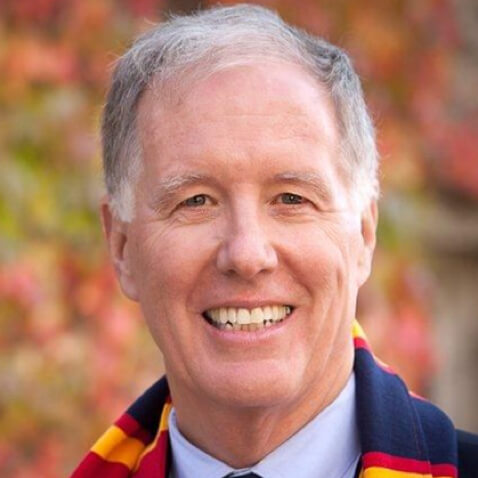
There is no denying that climate change is now a mainstream issue, as evidenced by vigorous debates in the recent federal election. While governments are struggling to come up with public-policy responses, global investors and financial institutions are not standing around. The investment world is already shaping markets in response to the effects of climate change.
Canada cannot wait to establish the expertise required to navigate successfully to a low-carbon economy. If we delay, others will shape Canada’s economic future for us.
As Mark Carney, Governor of the Bank of England and former governor of the Bank of Canada, noted: The financial system is “very much part of the solution” to dealing with climate change. It has both the ability to “manage the risks” and to “move capital from where it is today to where it needs to be tomorrow.”
The fact is, this is already happening. Just this fall, a group of the world’s largest asset-holders (pension and sovereign-wealth funds, endowments and insurers), responsible for more than US$2.4-trillion in investments, committed to carbon-neutral investment portfolios by 2050. Thirty-three banks with a combined US$13-trillion in assets committed to align their portfolios “to reflect and finance the low-carbon, climate-resilient economy required to limit global warming.”
At home, Canada’s largest global investors – our pension funds – are following the same trend. Caisse de dépôt et placement du Québec has committed to increase low-carbon investments by 50 per cent by 2020. Ontario Teachers’ Pension Plan has mapped its own Low Carbon Economy Transition Framework and is encouraging “pro-active and positive corporate behaviour” and disclosure of climate-related information. And the Canada Pension Plan Investment Board (CPPIB) just announced that it has more than doubled its renewable-energy assets since 2016.
The question for Canada is: Will this capital flow toward us or away from us? The global economic low-carbon transition poses both opportunities and risks. In its 2019 financial system review, the Bank of Canada warned that climate change is one of six key vulnerabilities in the Canadian financial system. At the same time, according to the Smart Prosperity Institute, “Canadian demand for low-carbon technologies will double through 2030” and “the size of the clean technology investment opportunity will reach a cumulative $184-billion from 2020 to 2030.”
If we want to minimize the risks and maximize the opportunities, we need to take the wheel by establishing made-in-Canada strategies that recognize the structure of our economy. That starts with significantly advancing our ability to execute sustainable finance – managing capital flows (lending and investment), risk management (such as insurance and risk assessment) and financial processes (including disclosure, valuations and oversight) that assimilate environmental and social factors, while also promoting sustainable economic growth and the long-term stability of the financial system and the economy.
The Canadian Expert Panel on Sustainable Finance flagged some very pragmatic needs to achieving this, including defining and implementing a climate-related financial risk disclosure regime, bringing climate change under the scope of fiduciary duty, and integrating sustainability issues into both risk management and the investment decision-making process.
Ultimately, all of these actions must be underpinned by significant knowledge and professional capacity in sustainable finance. It’s a quickly evolving movement within the global financial ecosystem – and Canada has catching up to do.
With the official launch on Tuesday of the Institute for Sustainable Finance, there is an important opportunity for Canada’s finance community and academia to collaborate to affect change, as they have in the past. After all, it was Nobel Prize-winning research on portfolio theory that changed the face of the investment landscape as it led to a new definition of fiduciary duty for institutional investors. Large pensions were transformed dramatically as a result – from boring, passive investors in government bonds and treasury bills, to significant players in public equity markets, and eventually in hedge funds, private equity and infrastructure. Consider that the CPPIB only made its first investment outside of Canadian government securities in 1999. By 2019, CPPIB had only 22 per cent invested in bonds, and only 15 per cent invested in Canadian assets across all asset classes.
In similar fashion, a redefinition of fiduciary duty to incorporate the effects of climate change would lead to significant changes in capital flows and risk-management processes. This will influence Canadian companies to provide more thorough corporate disclosures regarding climate change and help them compete among their peers in an increasingly climate-conscious investment environment.
Research, education and collaboration can help Canadian businesses and the financial sector manage these necessary changes. It’s time to harness the best and brightest minds from across the country to help Canada through one of the greatest economic transitions in history. The world won’t wait.
Jim Leech is chancellor of Queen’s University, former president and CEO of the Ontario Teachers' Pension Plan, and a member of the advisory board for the Institute for Sustainable Finance. Sean Cleary is BMO professor of finance, founding director of the master of finance program at Smith School of Business, Queen’s University, and the executive director of the Institute of Sustainable Finance.
This article was originally published in The Globe and Mail.
Authors

Jim Leech
Chancellor of Queen’s University, former president and CEO of the Ontario Teachers' Pension Plan, and member of the advisory board for the Institute for Sustainable Finance

Sean Cleary
Executive Director, Institute for Sustainable Finance, BMO Professor of Finance, Smith School of Business, Queen’s University